'Crazy Rich Asians' puts spotlight on region's inequalities
- Published

Constance Wu at the premiere of the movie Crazy Rich Asians
The film Crazy Rich Asians hit the box office last month, and the glossy rom-com has put a spotlight on the region's growing number of super-rich.
In plenty of shopping malls in Singapore - where the movie is based - you'll see designer shops with customers carrying bags from Prada, Gucci and Louis Vuitton.
It's much like that in other cities.
But the region, which was once considered a model of equitable growth, has also seen increased inequality.
According to Oxfam the number of super-rich in the Asia-Pacific has surpassed that of North America and Europe.
It is also home to the greatest number of millionaires and billionaires in the world, but also hosts nearly two-thirds of the world's working poor.
"Wealth inequality has reached alarming levels in a number of countries in the region," said Mustafa Talpur, who heads the inequality campaign in Asia for Oxfam.
Why Crazy Rich Asians could never please all
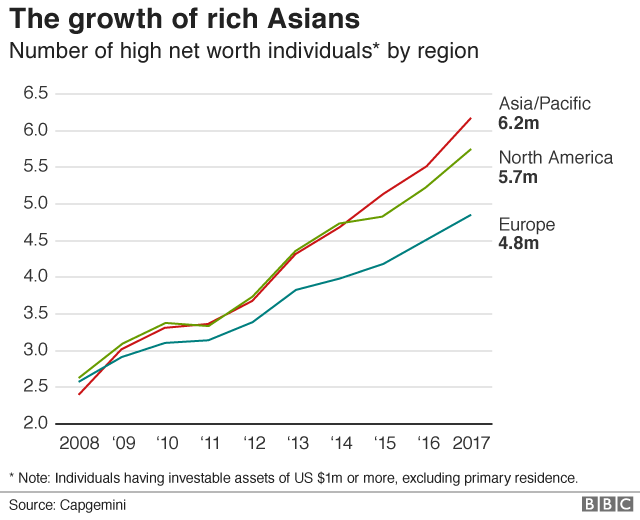
With 585 billionaires, the US still tops the table of the mega-rich, according to Forbes., external Mainland China is not far behind with 373.
But if you look at the Asia-Pacific region as a whole, then it has overtaken the US with 600 billionaires, according to Oxfam's analysis of data from Credit Suisse Global Wealth Databook 2017.
Also, the Asia-Pacific region has the greatest number of high net worth individuals in the world, or people who have more than $1m on top of the value of their main residence. The region accounts for 34.1% of high net worth individuals globally versus 31.3% for North America, according a Capgemini report from 2018.
Asia-Pacific also accounts for 30.8% of their total wealth versus 28.2% for North America.
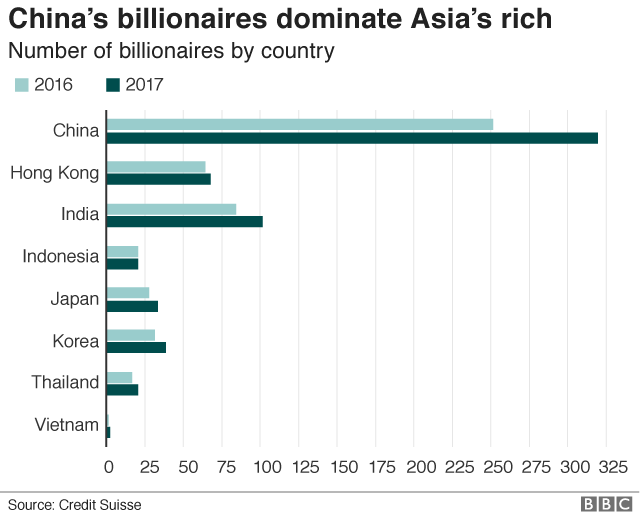
As China enjoyed annual growth of between around 8% and 11% , external between 2008 and 2012, the US and the eurozone licked their wounds after devastating financial crises.
"This strong growth through the years has been aided by robust GDP and equity markets growth especially in the emerging markets of China and India. Consistent growth in the key mature markets of Japan, Hong Kong, and Singapore also has been a contributing factor," said Chirag Thakral, deputy head of market intelligence at Capgemini in New York.
Who are the richest people in Asia?
Ma Huateng, also known as Pony Ma, is Asia's wealthiest person and number 17 in the world, according to the 2018 Forbes list.
He is the chief executive of China's tech giant Tencent Holdings, which owns WeChat, an enormously popular messaging app in China. He has a net worth of $45.3bn.
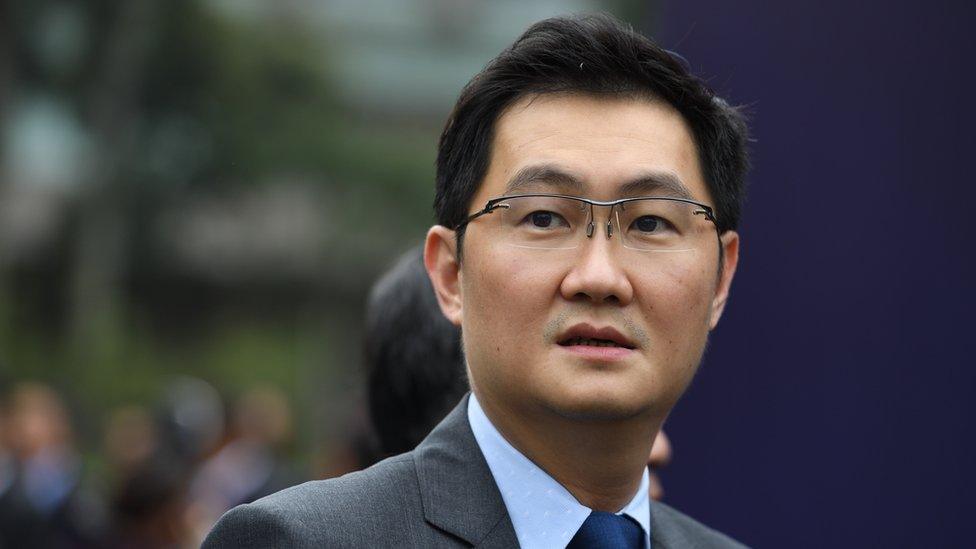
Pony Ma is reported to be Asia's wealthiest person
Also among Forbes' top 20 billionaires is Jack Ma, chairman of Alibaba, the Chinese e-commerce giant. Alibaba is one of the world's most valuable companies, and its shares nearly doubled in value last year. His net worth was $39bn.
Also in the top 30 are Hong Kong's Li Ka-shing and China's Wang Jianlin, whose net worth was $34.9bn and $30bn respectively on the Forbes list.
Li Ka-shing retired from leading his business empire earlier this year and is handing the reins to his eldest son. Li Ka-shing's CK Hutchison Holdings and CK Asset Holdings are involved in sectors including retail, telecoms and power.
Wang Jianlin chairs Chinese conglomerate Dalian Wanda Group. The group is one of the world's biggest commercial real estate developers and owns US movie theatre chain AMC and film studio Legendary Entertainment. Last year, the heavily indebted firm sold a series of assets.
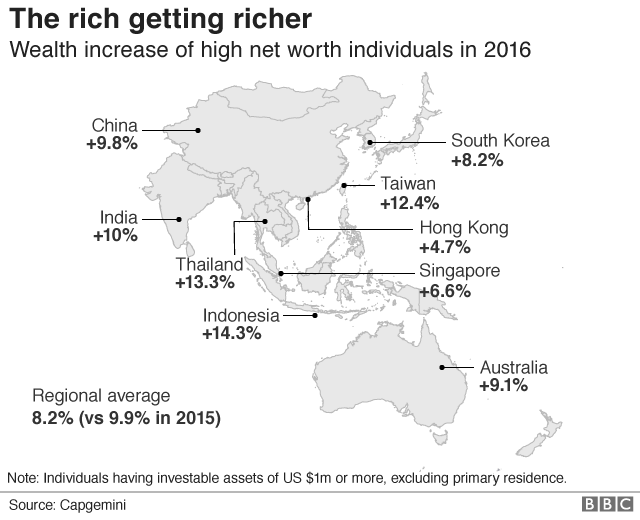
How bad is inequality in Asia?
Last year, 79% of the wealth created in China went to the richest 1% of the population, while 73% of the wealth created in India went to the top 1%, according to Oxfam's analysis.
As a result, the top 1% of China's population owned 47% of its national wealth in 2017, while in India they owned 45% of the country's wealth.
In Thailand - a highly unequal country in South East Asia - 96% of the wealth created last year went to the top 1% of the population.
In another sign of rising inequality, Asia-Pacific's income Gini coefficient - a gauge of economic inequality - increased from 0.37 to 0.48 between 1990 and 2014.
A coefficient of 0 denotes perfect equality and at 1 represents total inequality
Wealth inequality in Asia is even wider. The Gini coefficient was at a lofty 0.82 for China, 0.88 for India and 0.90 for the rest of the Asia-Pacific region in 2015, according to reports by Oxfam and UNESCAP, a United Nations social commission.
- Published18 August 2018

- Published20 August 2018

- Published13 July 2018
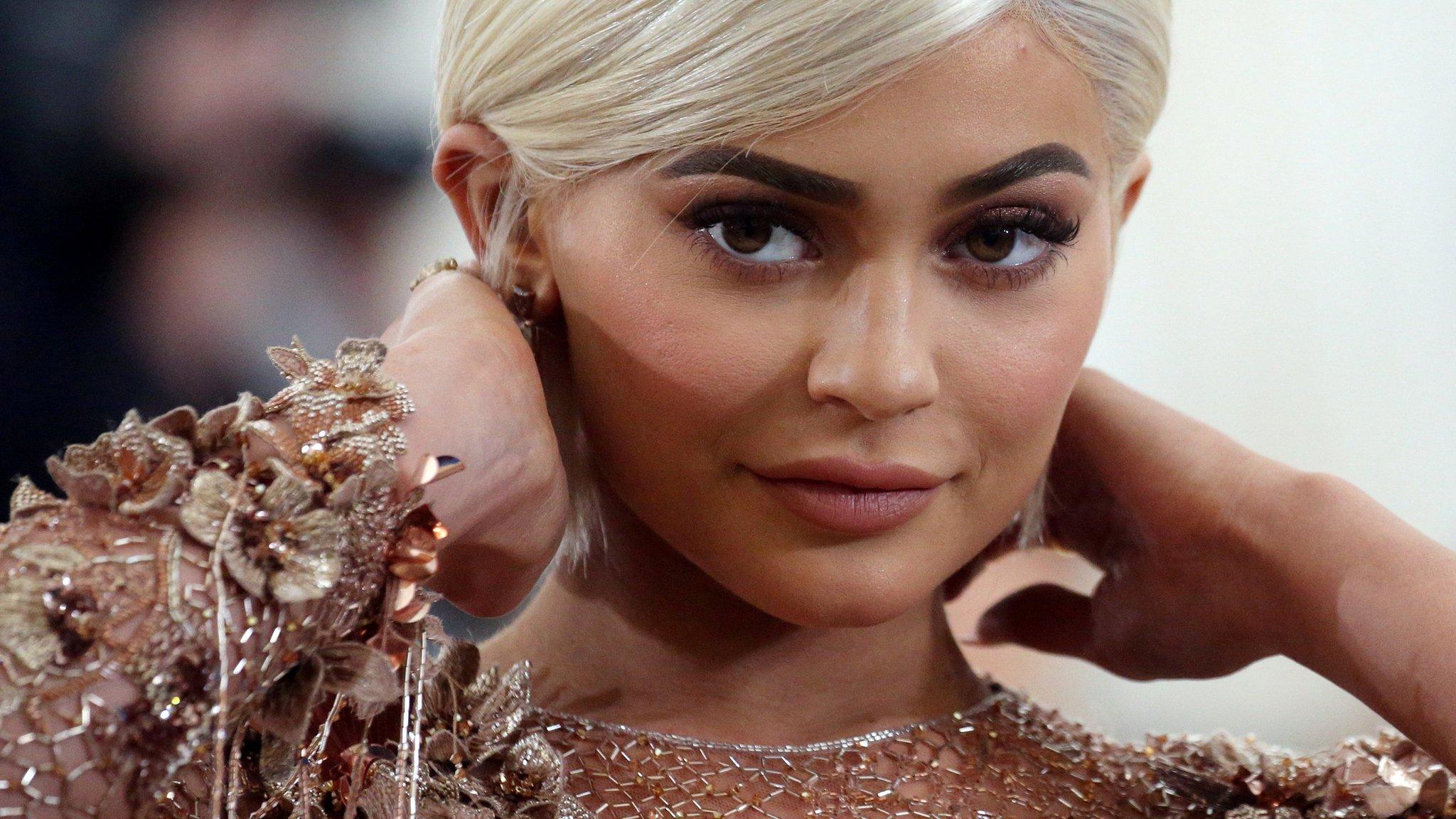
- Published22 January 2018
